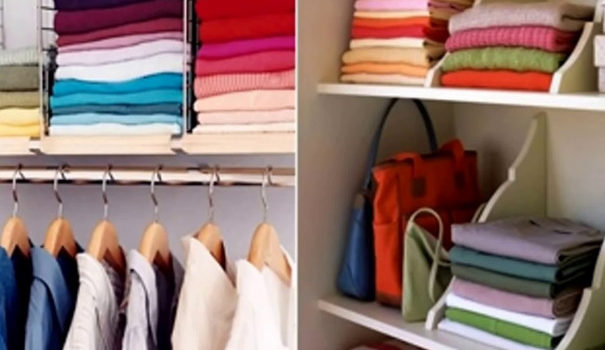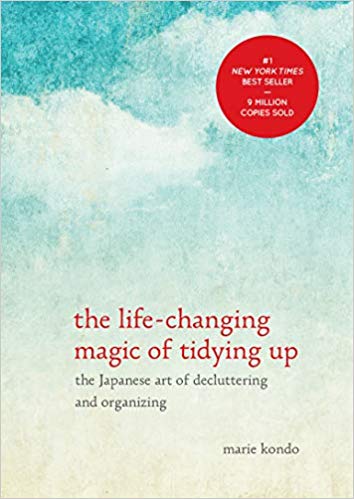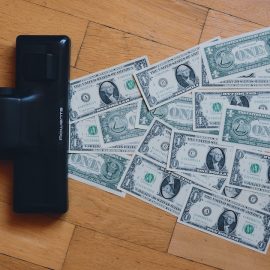

This article is an excerpt from the Shortform summary of "The Life-Changing Magic of Tidying Up" by Marie Kondo. Shortform has the world's best summaries of books you should be reading.
Like this article? Sign up for a free trial here .
Marie Kondo’s Clothes Method, at a High Level
Many of us have difficulty keeping our homes tidy because we were never taught how. But tidying is a simple act, and there are actually only a few reasons why we have difficulty tidying. People who can’t tidy fall into three categories: they can’t get rid of things, they can’t organize things, or a combination of both–most of us fall into the last category.
Tidying is really just the sum of two physical acts: 1) deciding whether you want to keep something, and then 2) deciding where to put it. If you do these two simple things the right way, you can actually achieve perfection in your home.
- Get all your belongings in a single category (eg clothing) across your entire home, and put them in one pile in the same room.
- Pick up each individual item, and decide whether to keep or discard it.
- For the items you keep, organize them effectively.
- Move on to the next category (eg books).
Here’s the KonMari method for clothes, at the highest level:
- Get all your belongings in a single category (eg clothing) across your entire home, and put them in one pile in the same room.
- Pick up each individual item, and decide whether to keep or discard it.
- For the items you keep, organize them effectively.
- Move on to the next category (eg books).
The Konmari Clothes Process
Marie Kondo breaks clothes down into subcategories:
- Tops–shirts, sweaters
- Bottoms–pants, skirts, shorts
- Clothes to hang–jackets, coats, suits, dresses
- Socks
- Undergarments
- Bags–handbags, messenger bags
- Accessories–scarves, belts, hats, jewelry
- Clothes for specific events–swimsuits, uniforms, kimonos
- Shoes
If you have a lot of clothes, you can also use these subcategories to help you tackle smaller portions one at a time.
Konmari Step 1: Discarding Clothes
Gather all your clothes from all over your home and put them in one place, on your bed or on your bedroom floor. When you think you’ve finished, ask yourself if there could be anything else hiding anywhere else.
- Marie Kondo gives her clients a rule: if they find another item of clothing after they’ve gathered everything and sorted through it, that item immediately gets discarded–you didn’t even remember you owned it!
Don’t be alarmed by how much you have–everyone has way more than they think. From Marie Kondo’s experience, the average number of clothing items people own is 160.
Then go through all your clothing, item by item, picking each one up and asking if it sparks joy. If it does, it goes in the keep pile. If it doesn’t, it goes in the discard pile. Remember to thank anything you discard.
- You can start a maybe pile, but try to keep this small. Remember you should feel the answer to whether something sparks joy immediately, and you shouldn’t keep things that don’t spark joy. If you hesitate, chances are high you should discard it. Revisit this pile after you’ve gone through the rest of your clothes and have a better sense of what sparks joy and what doesn’t.
- If you’re having trouble, start with off-season clothes. Because you don’t need these in the immediate future, it’s much easier to be in tune with what sparks joy and what doesn’t. Ask yourself if you’d wear this item right now if the temperature suddenly changed. If the answer is yes, keep it. If the answer is no, or “well…” then put it in the discard/donate pile.
If your clothing doesn’t spark joy, don’t just turn it into loungewear. You should still wear things at home that spark joy, not castoffs that at best spark no feelings in you and at worst spark the same negative feelings that kept you from wearing them out of the house. Free up the space and get yourself some nice loungewear, made by companies that specialize in loungewear.
You may worry you won’t have enough clothes to wear if you only keep what sparks joy. But by keeping only what sparks joy, you’ll end up with exactly the amount of clothing you need, or you’ll know exactly what to buy to fill out your newly sparse wardrobe.
Konmari Step 2: Organizing
(Shortform note: The book has a lot of suggestions for organizing clothes. Try to apply the large ideas, but if a specific recommendation is way too tiresome for the reward, then it’s ok to skip it.)
We generally have two ways of organizing our clothing: folding items to go into drawers, or hanging items in a closet. It might seem like the two options are equally as efficient, but folding is a more effective way to organize your clothing (as long as it’s not clothing that demands to be hung, like collared shirts or dresses–we’ll cover that in the next section).
Hanging might seem like an easier option to help keep things tidy, but actually having a lot of hanging clothes is one reason why our closets are bursting. Not to mention, when our closets are packed with hanging clothes, getting anything in and out is difficult and creates more mess.
Folding
Neatly folding your clothes will help you solve even the most annoying storage problem. Folding has a number of other benefits too:
- Folding an item of clothing is your opportunity to thank it for providing you support and protection.
- Folding allows you to notice your clothes and their condition in detail.
- As you smooth a piece of clothing out, you touch it with your hands and your energy transfers into it.
- Healing in Japanese is te-ate, literally translating to “apply hands.” Touch has power–children are comforted when their parents stroke their heads or hug them, and massages by an actual person are more effective than sitting in a massage chair. Likewise, folding can have a positive effect on our clothes.
Hanging
Folding is a better storage solution, but some items of clothing need to be hung, such as dresses, suits, coats, jackets, and any clothing with structure that makes it hard to fold, such as collared shirts.
The basic rule of thumb is hang clothes by category, with categories side by side. Have a suit section, a dress section, a jacket section.
You can also organize your closet so that the items rise to the right. Lines that rise up to the right make us feel more comfortable, and they create a lighter feeling in us when we see them.
- Put heavier, longer items of clothing on the left side of your closet, and lighter, shorter items on the right. The order might go: coats, dresses, jackets, pants, skirts, blouses.
Seasonal Clothing
Marie Kondo doesn’t go in for seasonal storage. It’s an outdated custom that was more necessary before we had temperature controlled indoors.
If you want to keep your clothes as neat and tidy as possible and keep only clothes that spark joy, you should aim to keep all of your clothes in your closet all year round.
- This prevents you from forgetting what you have and buying off-season clothes that you don’t need.
Don’t over-categorize your clothes by season–categorize by material of clothing, all cotton together, all wool together, cotton-like and wool-like close to each of those respective categories. Again, this will save you from forgetting what you have.
If you really don’t have enough space, try storing only purely seasonal items away first: swimsuits, sun hats, gloves, heavy scarves.
- Most people store off-season clothing in plastic bins–these are the worst storage units because they become a hassle to open up, and then we never see the contents. Plus, usually, stuff gets put on top of plastic bins like this, and then it takes too much effort to get into them.
- Marie Kondo recommends purchasing a set of drawers if you have so much off-season clothing you need a storage solution. You can store your clothes in here using…
———End of Preview———

Like what you just read? Read the rest of the world's best summary of Marie Kondo's "The Life-Changing Magic of Tidying Up" at Shortform . Learn the book's critical concepts in 20 minutes or less .
Here's what you'll find in our full Marie Kondo summary :
- The psychological benefits of tidying
- How to Tidy the Konmari method
- How to deal with Clothing, Books, Papers, and Sentimental Items
- ...and much more






